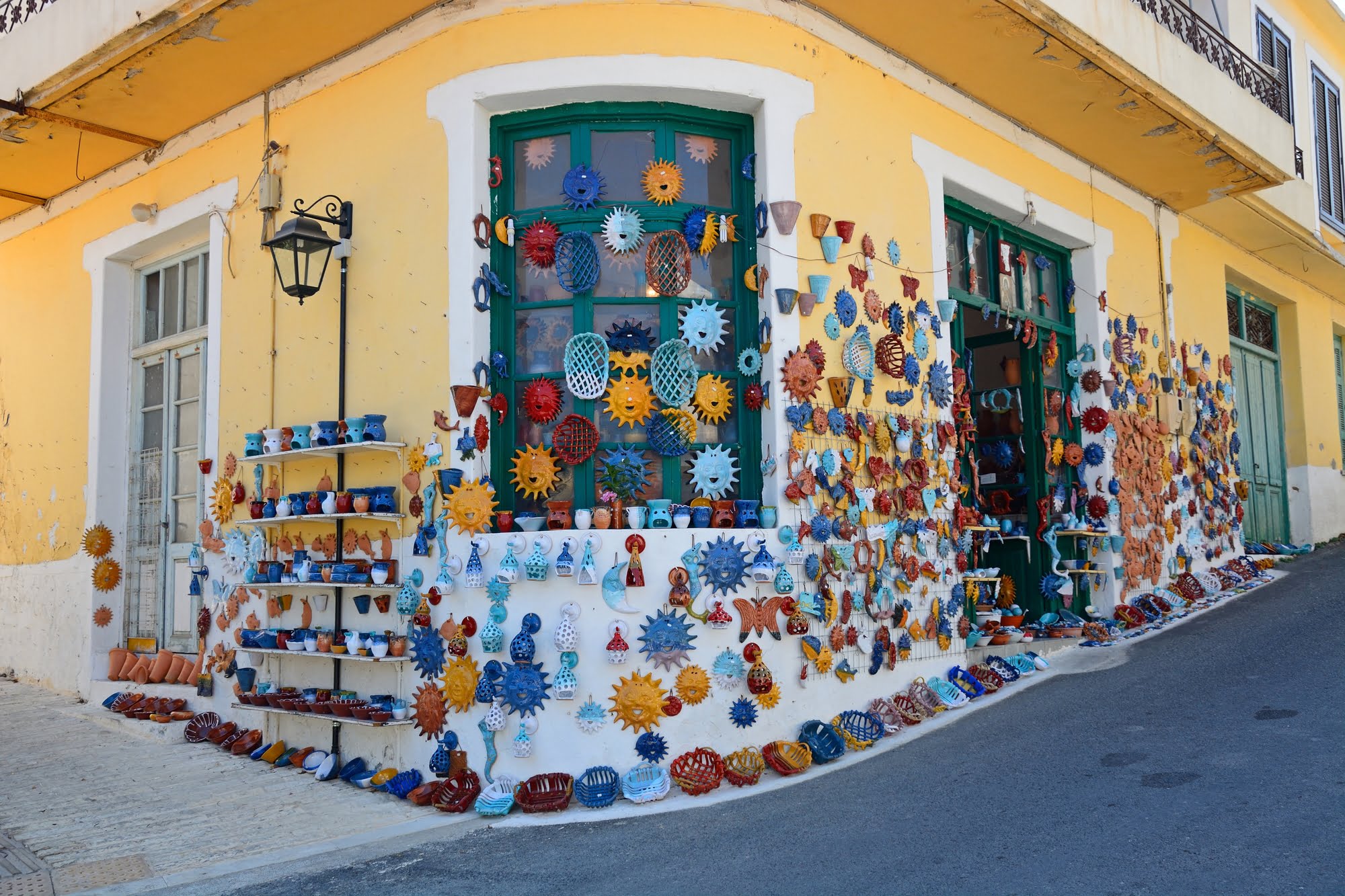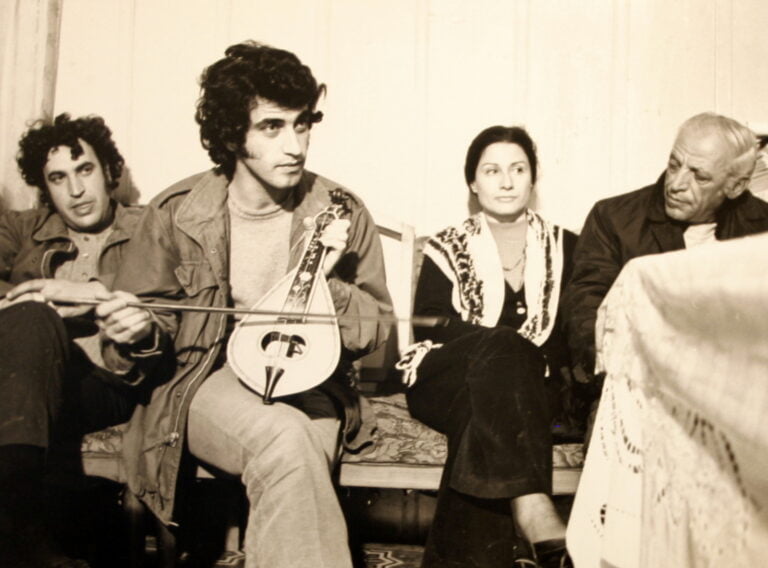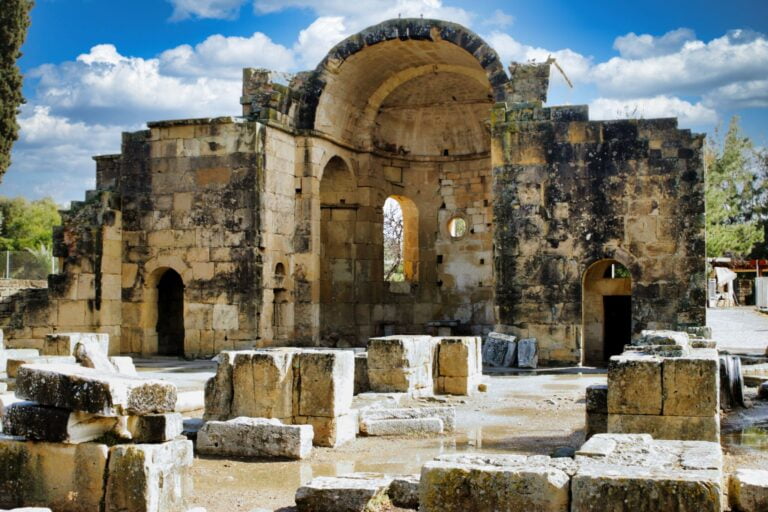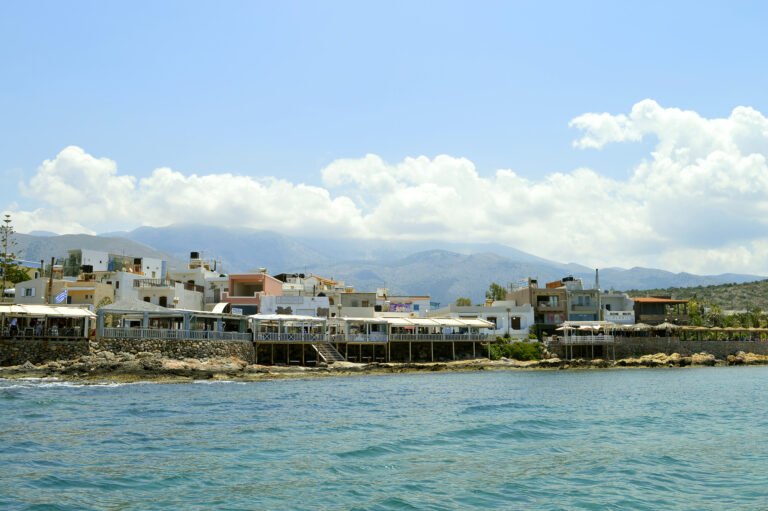The Hidden Treasures of Margarites, Crete: Unearthing History, Artisan Pottery, and Monastic Heritage
Deep in the heart of Crete, the village of Margarites stands as a testament to the island’s rich history and vibrant culture. Known for its picturesque landscapes and artisanal pottery, Margarites is more than just a charming village; it is a living museum that encapsulates the essence of Cretan tradition. This article delves into the history of Margarites and explores the unique sources of clay that have made it a hub for pottery in Crete.
As you step into the village of Margarites, nestled in the hills of Crete, you’re immediately enveloped in an atmosphere that feels both ancient and alive. The air is tinged with the earthy scent of clay, and the cobblestone streets whisper stories of a rich history that dates back to the Minoan era.
But what truly captivates your senses are the vibrant displays of pottery adorning the walls of quaint shops and the mesmerizing sight of local potters passionately shaping clay on their wheels. This article offers a newcomer’s perspective on this enchanting village, where every corner is a living canvas and every moment a step back in time.
Wall Exhibits
As you wander through the narrow lanes, your eyes are immediately drawn to the walls of the buildings, which serve as open-air galleries. Intricately designed pots, plates, and vases are displayed with pride, each piece a unique testament to the artisanal skills honed over generations. The pottery ranges from earthy, rustic pieces that echo the natural landscape of Crete to more elaborate items adorned with intricate patterns and glazes.
Windows and Doorways
Even the windowsills and doorways of Margarites seem to be curated spaces. Smaller items like decorative bowls, ceramic figurines, and even clay beads are tastefully arranged, inviting passersby to pause and appreciate the craftsmanship that goes into each piece.
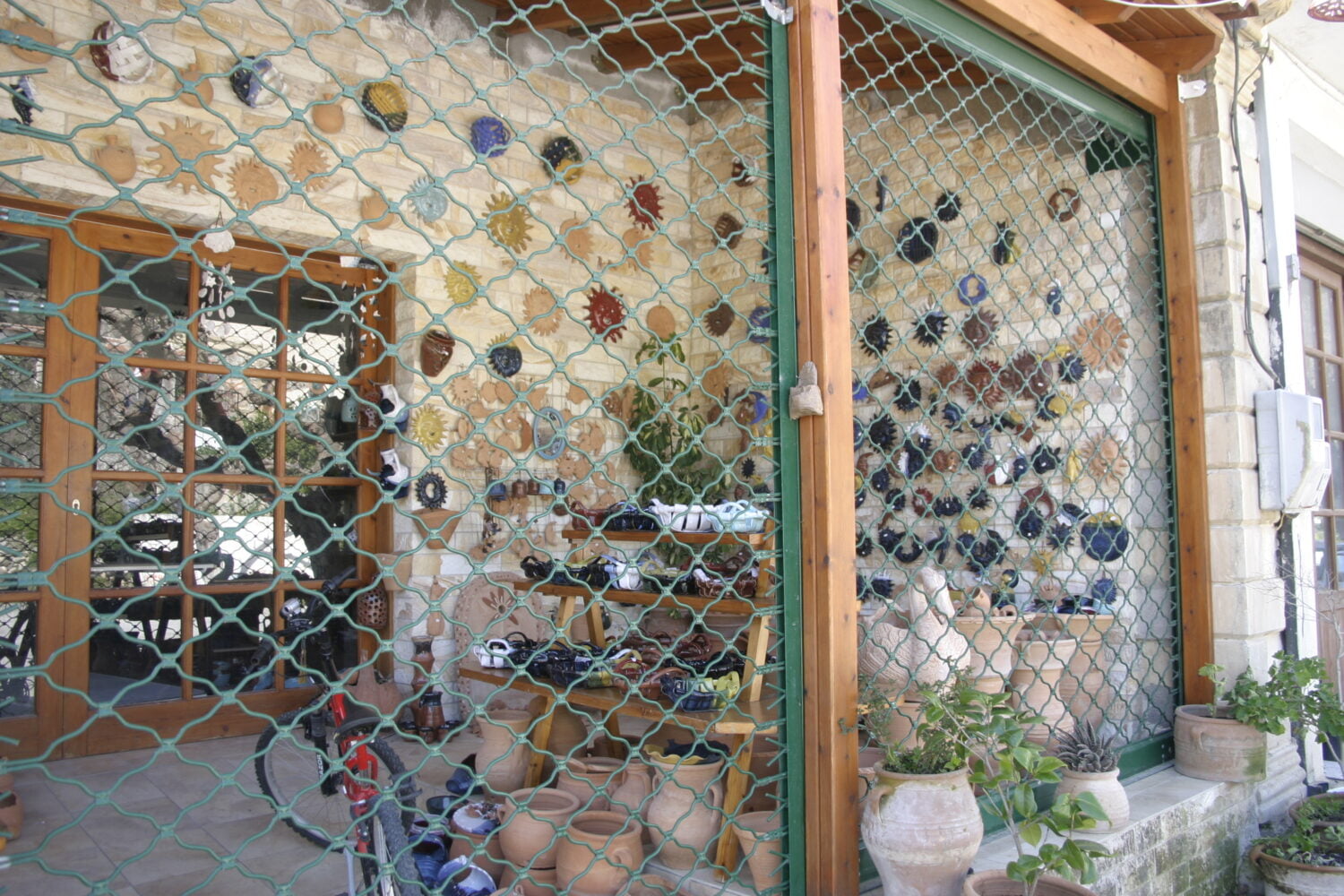
The Workshop Experience
One of the most magical experiences in Margarites is the opportunity to witness a potter at work. As you step into a local workshop, the atmosphere changes; it’s quieter, more focused, and tinged with a reverence for the craft. The potter sits at a traditional wheel, hands coated in a layer of wet clay, eyes fixed intently on the form taking shape before them.
The Artistic Process
The potter’s hands move with practised ease as the wheel spins, moulding the clay into various shapes and forms. It’s a mesmerizing dance of fingers and thumbs, pressure and release, creation and recreation. You can see the concentration etched on the potter’s face, a testament to the skill and dedication that this art form demands.
Interactive Learning
Some workshops even offer visitors the chance to try their hand at pottery, providing a tactile connection to this ancient craft. Under the guidance of experienced potters, you can experience the joy and challenge of shaping your own piece, gaining a newfound appreciation for the skill involved.

Ancient Roots
The history of Margarites can be traced back to the Minoan civilization, which flourished in Crete from approximately 2700 to 1420 BCE1. Archaeological evidence suggests that the village was a significant centre for pottery even during these ancient times. The Minoans were known for their intricate frescoes and advanced architectural designs, and the clay from Margarites played a pivotal role in these artistic endeavours.
Byzantine and Venetian Eras
The village continued to prosper during Byzantine, becoming a Christian art and iconography centre. With the Venetian occupation of Crete in the 13th century, Margarites became a strategic location. The Venetians built fortifications and introduced new pottery techniques, further enriching the local craft.
Modern Times
In the 20th century, Margarites faced challenges due to economic fluctuations and urban migration. However, the village has managed to preserve its cultural heritage, partly thanks to initiatives promoting traditional crafts and tourism.
The Clay of Margarites
Geological Origins
The clay found in Margarites is unique due to its geological composition. The region is rich in kaolinite, a type of clay mineral that is ideal for pottery2. Various trace elements like iron and quartz add distinct colours and textures to the clay, making it highly sought after by artisans.
Extraction Methods
Traditional methods of clay extraction have been passed down through generations. The process begins with the identification of suitable clay beds, followed by manual digging. The extracted clay is then purified and prepared for pottery.
Sustainability Concerns
As the demand for Margarites clay grows, there are increasing concerns about the sustainability of its extraction. Local authorities and organizations are working to implement responsible mining practices to ensure the long-term availability of this valuable resource.
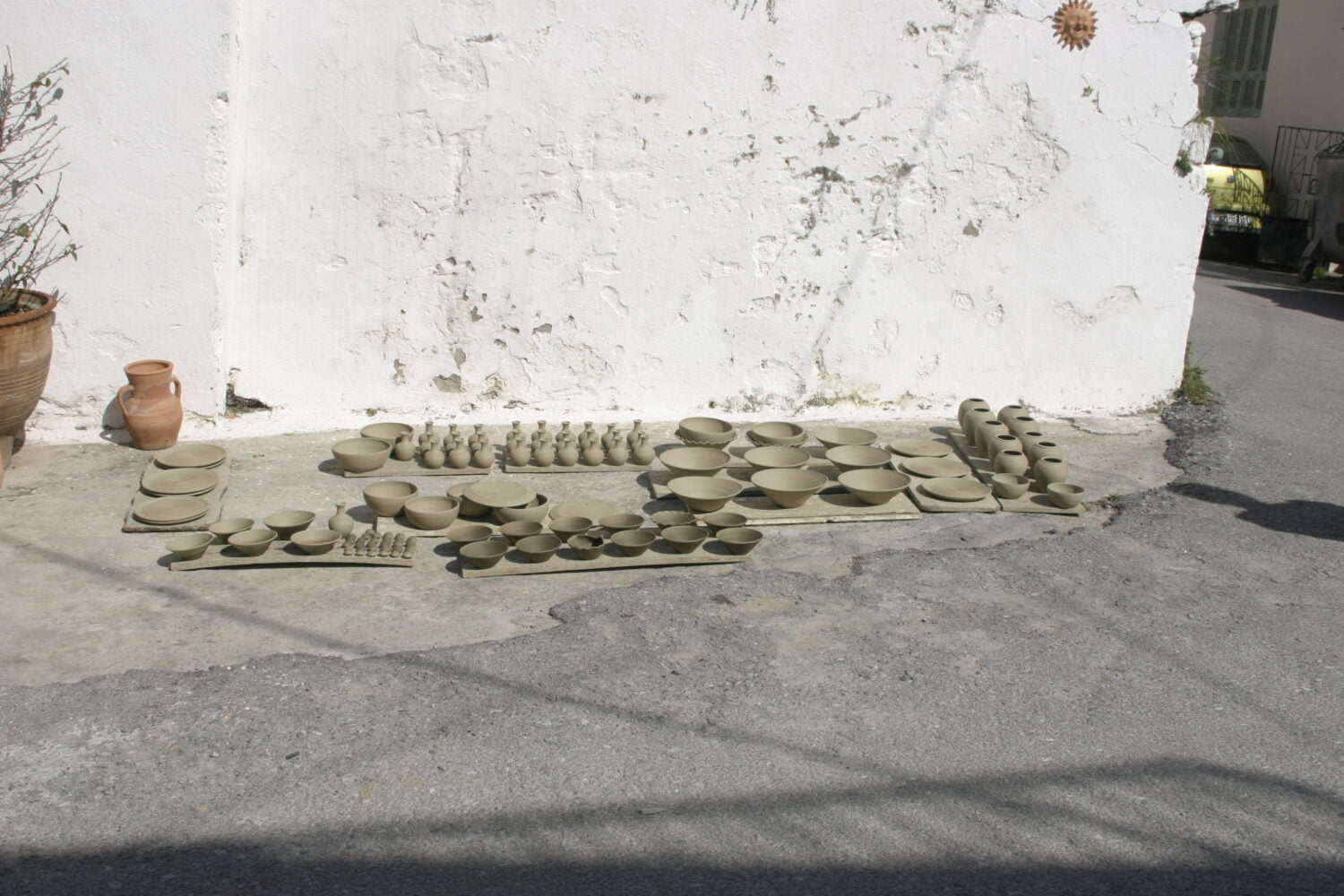
The Monastery of Saint Gedeon
In the heart of Margarites, a village already steeped in history and culture, lies another gem that adds a spiritual dimension to the area: the Monastery of Saint Gedeon. This monastery, often overlooked in the broader narrative of Margarites, is a significant landmark that deserves its own spotlight. This section aims to explore the monastery in detail, from its historical roots to its architectural grandeur and role in the village’s spiritual and cultural life.
Founding and Early Years
The Monastery of Saint Gedeon is believed to have been founded in the late Byzantine period, although the exact date remains a subject of scholarly debate. The monastery was named after Saint Gedeon, a biblical figure renowned for his faith and courage.
Venetian Influence
During the Venetian occupation of Crete, the monastery underwent significant changes. It became a centre for theological studies and was endowed with various artworks and manuscripts, some of which still have survived.
Modern Era
Thanks to governmental and private initiatives, the monastery has been restored and revitalized in recent years. It now serves as a place of worship and a repository of religious art and historical documents.
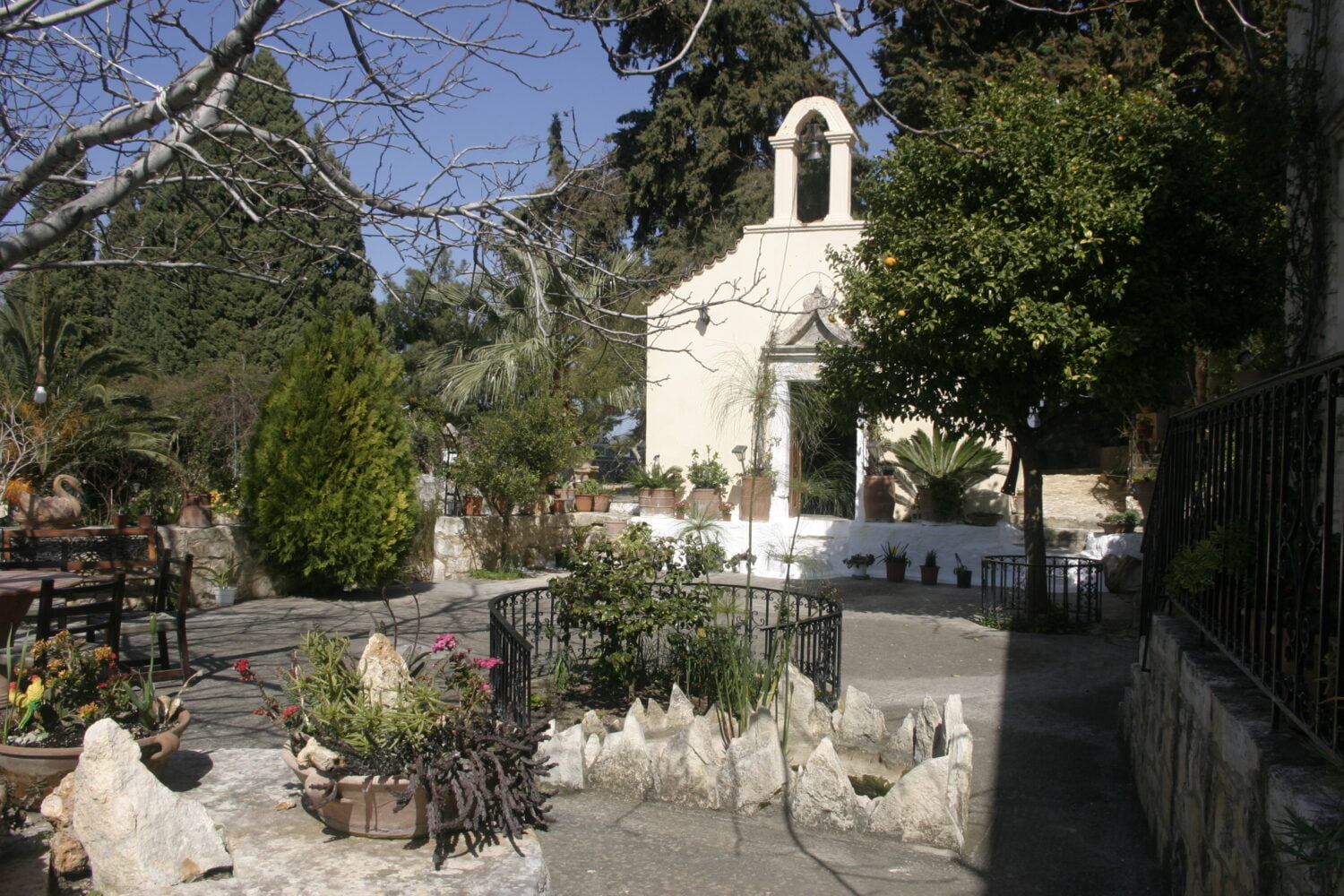
How to get there
By Car
Renting a car provides the most flexibility for exploring Margarites and its surroundings. Most international car rental agencies have offices at the airports and major cities.
Taxi Services
Taxis are readily available at airports, ports, and cities. It’s advisable to agree on a fare before starting the journey.
Bus Services
Public buses operate from Heraklion and Chania to Perama, the nearest town to Margarites. From Perama, local buses or taxis can take you to Margarites.
As we conclude this exploration of Margarites, it’s essential to recognize that the village is not just a sanctuary for art and history; it’s also a spiritual haven epitomized by the Monastery of Saint Gedeon. This isn’t merely a village; it’s a multifaceted gem where the facets of art, spirituality, and history reflect and amplify each other in a timeless symphony.
From the moment you step onto its cobblestone streets, you’re not merely a visitor but a participant in a narrative that spans millennia.
The walls of Margarites are more than just structures; they are canvases that display a living gallery of human creativity and spiritual devotion. Each piece of pottery, whether a simple, earthy bowl or an intricately designed vase, is a testament to the artisanal skills passed down through generations. These aren’t just objects; they are stories moulded from the earth, each a chapter in the village’s rich history.
The Monastery of Saint Gedeon adds another layer to this rich tapestry. It is a spiritual anchor to the community, where the same hands that mould clay in artistic creation come together in prayer and reflection. The monastery is not just a building; it’s a living institution embodying the village’s deep spiritual roots, offering a tranquil counterpoint to the bustling creativity in the workshops.
Witnessing a potter at work in Margarites is akin to a spiritual experience. The focused atmosphere in the workshops, the rhythmic spinning of the wheel, and the transformation of a lump of clay into a work of art echo the transformative power of spiritual practice observed in the monastery. It’s a dance of creation that links the artisan and the monk, the material and the spiritual, in a circle of life that has been turning in Margarites for centuries.
Even the opportunity to engage in pottery-making yourself under the guidance of skilled artisans is not just an artistic endeavour; it’s a spiritual journey. It connects you to the earth, history, and community in a tactile, immediate way, much like a pilgrimage to the Monastery of Saint Gedeon offers a connection to something greater than oneself.
So, what does Margarites offer to a newcomer? It provides a holistic experience—a journey through time, art, spirituality, and the intricate labyrinth of human culture and devotion. It’s a place where every wall, every face, and every moment is a story waiting to be discovered.
Whether you’re marvelling at a piece of pottery, watching an artisan at work, or finding solace in the quiet halls of the Monastery of Saint Gedeon, you’re not just observing; you’re participating in a living, breathing tapestry that defies the limitations of time and space.
In Margarites, you don’t just see art; you feel it. You don’t just learn about history; you live it. And you don’t just visit a religious site; you experience its spiritual essence. It’s not merely a destination; it’s an odyssey for the soul, a place that invites you to explore, create, reflect, and connect.
So, if your travels ever bring you to the enchanting island of Crete, carve out time for Margarites. It’s not just a point on a map; it’s a spiritual, artistic, and historical treasure that promises not just to show you the beauty of Cretan culture but to make you a part of it. And as you leave, you’ll find that you carry a piece of Margarites with you—not just as a clay artefact or a religious memento but as a cherished experience, a story to share, and a promise to return to this extraordinary confluence of art, spirituality, and history.
Table of Contents
Views: 230

